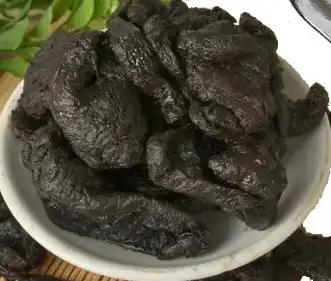Rehmannia Root Extract: Key Active Compounds?
Rehmannia root, a staple in traditional Chinese medicine, has garnered significant attention for its potential health benefits. This herb, scientifically known as Rehmannia glutinosa, contains a complex mixture of bioactive compounds that contribute to its therapeutic properties. In this comprehensive guide, we'll delve into the key active compounds found in Rehmannia root extract, exploring their unique characteristics and potential health impacts.
Catalpol and Iridoids: Rehmannia's Primary Bioactives
At the heart of Rehmannia's potent effects lies a group of compounds known as iridoids, with catalpol taking center stage. Catalpol, a cyclopentano-pyran monoterpene glucoside, is arguably the most prominent and well-studied active ingredient in Rehmannia root extract.
Catalpol has demonstrated a wide array of biological activities, including:
- Neuroprotective effects
- Anti-inflammatory properties
- Antioxidant capabilities
- Potential anti-diabetic actions
Research suggests that catalpol may help protect against neurodegenerative diseases by promoting the survival of neurons and reducing oxidative stress in the brain. Its anti-inflammatory properties may contribute to Rehmannia's traditional use in managing various inflammatory conditions.
Beyond catalpol, Rehmannia contains other iridoid glycosides that complement and enhance its therapeutic potential. These include:
- Aucubin
- Leonuride
- Melittoside
Aucubin, in particular, has shown promise in liver protection and may contribute to Rehmannia's reputation for supporting overall health and longevity. Leonuride and melittoside, while less studied, are believed to contribute to the herb's overall pharmacological profile.
The synergistic action of these iridoids is thought to be responsible for many of Rehmannia's traditional uses, including supporting kidney and liver function, promoting blood health, and potentially aiding in the management of diabetes.
Ajugol in Rehmannia: Benefits and Functions
Another key compound found in Rehmannia root extract is ajugol, an iridoid glycoside that has been the subject of increasing scientific interest. Ajugol contributes to the overall therapeutic profile of Rehmannia and may offer unique benefits.
Some of the potential benefits associated with ajugol include:
- Immunomodulatory effects
- Anti-inflammatory properties
- Potential anti-cancer activities
Research suggests that ajugol may help modulate the immune system, potentially enhancing its ability to respond to various challenges. This immunomodulatory effect could explain some of Rehmannia's traditional uses in supporting overall health and resilience.
The anti-inflammatory properties of ajugol may work in concert with those of catalpol and other compounds in Rehmannia, contributing to the herb's potential in managing chronic inflammatory conditions. Some studies have even hinted at possible anti-cancer properties, though more research is needed to fully understand this potential.
Ajugol's presence in Rehmannia underscores the complexity of this herb's phytochemical profile. It's a prime example of how multiple compounds work together to create the overall therapeutic effect of herbal medicines.
How Rehmannia's Phenolic Acids Enhance Its Effects?
While iridoid glycosides like catalpol and ajugol often take the spotlight, the phenolic acids present in Rehmannia extract play a crucial role in its overall efficacy. These compounds contribute significantly to Rehmannia's antioxidant properties and may enhance its other therapeutic effects.
Key phenolic acids found in Rehmannia include:
- Verbascoside
- Echinacoside
- Acteoside
Verbascoside, also known as acteoside, is a caffeoyl phenylethanoid glycoside with potent antioxidant properties. It's been shown to protect against oxidative stress and may contribute to Rehmannia's potential neuroprotective effects.
Echinacoside, another phenolic compound, has demonstrated anti-inflammatory and antioxidant properties in various studies. It may work synergistically with the iridoid glycosides to enhance Rehmannia's overall therapeutic profile.
The presence of these phenolic acids adds another layer to Rehmannia's complex phytochemical makeup. They not only contribute their own health-promoting properties but also may enhance the bioavailability and efficacy of other compounds in the extract.
For instance, the antioxidant properties of these phenolic acids may help protect the more delicate iridoid glycosides from degradation, potentially increasing their stability and bioavailability. This protective effect could contribute to the overall potency and effectiveness of Rehmannia root extract.
Moreover, the anti-inflammatory and antioxidant properties of these phenolic acids may complement and enhance the similar effects of compounds like catalpol and ajugol. This synergistic action exemplifies the holistic nature of herbal medicine, where multiple compounds work together to produce a more potent therapeutic effect than any single compound alone.
The presence of these phenolic acids also contributes to Rehmannia's potential in supporting cardiovascular health. Some studies suggest that verbascoside and related compounds may help protect against atherosclerosis and other cardiovascular issues, adding another dimension to Rehmannia's potential health benefits.
In the context of modern herbal medicine and nutraceutical development, understanding the role of these phenolic acids is crucial. It highlights the importance of using whole herb extracts or carefully balanced standardized extracts that preserve the natural ratios of these compounds, rather than isolated single compounds.
As research continues to unravel the complex interactions between the various compounds in Rehmannia, we may gain even more insight into how these phenolic acids contribute to its overall therapeutic profile. This ongoing research not only deepens our understanding of Rehmannia but also paves the way for more targeted and effective applications of this ancient herb in modern health practices.
Conclusion
The potency of Rehmannia root extract lies in its complex array of bioactive compounds, each contributing to its overall therapeutic profile. From the neuroprotective and anti-inflammatory effects of catalpol to the immunomodulatory properties of ajugol and the antioxidant capabilities of its phenolic acids, Rehmannia offers a multifaceted approach to supporting health and wellness.
As research continues to unravel the intricate interactions between these compounds, we gain a deeper appreciation for the wisdom of traditional herbal medicine and its potential applications in modern healthcare. The synergistic action of these compounds underscores the importance of using whole herb extracts or carefully balanced standardized extracts to harness the full potential of Rehmannia.
Whether you're a health professional looking to incorporate natural remedies into your practice, or an individual seeking to enhance your wellness routine, understanding the key active compounds in Rehmannia can help you make informed decisions about its use.
Are you interested in harnessing the power of Rehmannia for your health and wellness needs? Look no further than Angelbio. As a leading innovator in natural ingredients for health and wellness, Angelbio is dedicated to providing high-quality, scientifically-backed botanical extracts. Our Rehmannia root extract is carefully standardized to ensure optimal levels of key active compounds, offering you the full spectrum of Rehmannia's potential benefits. Don't miss out on this powerful herbal extract – contact us today at angel@angelbiology.com to learn more about how our Rehmannia extract can support your health goals.
References
1. Zhang, R., et al. (2020). "Rehmannia glutinosa: A review of botany, chemistry and pharmacology." Phytochemistry Reviews, 19(4), 1043-1070.
2. Liu, C., et al. (2019). "Rehmannia glutinosa: Historical and modern perspectives." Journal of Ethnopharmacology, 236, 50-61.
3. Wang, Y., et al. (2018). "Catalpol: A potential therapeutic for neurodegenerative diseases." Progress in Neurobiology, 163-164, 79-97.
4. Jiang, B., et al. (2017). "Iridoids: A review of their bioactivity as potential new therapeutic agents." Current Medicinal Chemistry, 24(40), 4439-4457.


